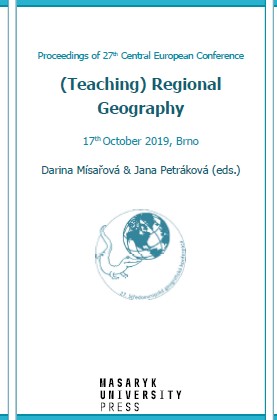Anthropogenic relief transformations – their knowledge and evaluation with regard to the uniqueness and cultural identity of regions
Anthropogenic relief transformations – their knowledge and evaluation with regard to the uniqueness and cultural identity of regions
Author(s): Karel Kirchner, Lucie Kubalíková, František Kuda, Marek Havliček
Subject(s): Cultural history, Human Geography, Regional Geography, Environmental Geography
Published by: Masarykova univerzita nakladatelství
Keywords: anthropogenic relief transformations; cultural heritage; region;
Summary/Abstract: Within the development of new regional geography, the role of human geographic research in the study of regions is emphasized. Regional uniqueness, a consciousness of belonging to a particular region and regional identity also play an important role in the definition of regions. However, physical geography disciplines, e.g. geomorphology, can also contribute to the knowledge of these aspects with regard to the definition of regions. Currently, within the framework of geomorphology, attention is paid to the diversity of anthropogenic landforms. The knowledge and evaluation of these anthropogenic landforms, which are an important part of the historical elements of the landscape and are also referred to as cultural artefacts of the landscape, enables to supplement the cultural-historical values of the region and to specify the cultural identity of the region. On the example of sites – Staré Hradisko and Hostýn – we will present the specifics of secondary geodiversity with respect to the cultural identity of the sites.
- Page Range: 65-73
- Page Count: 9
- Publication Year: 2020
- Language: English
- Content File-PDF

